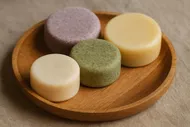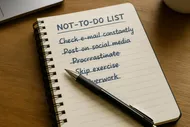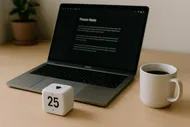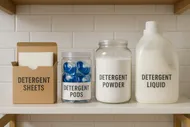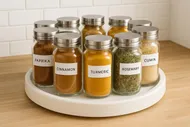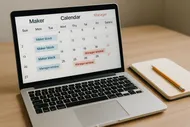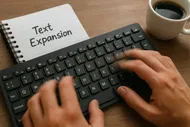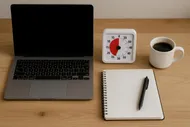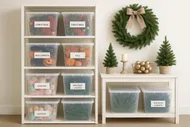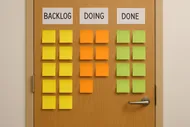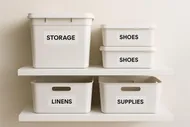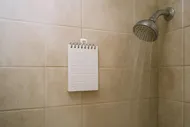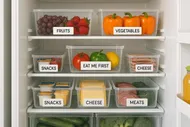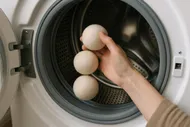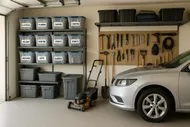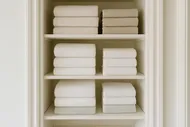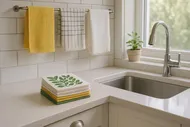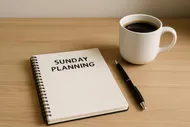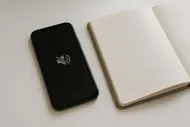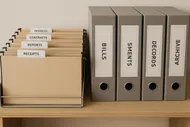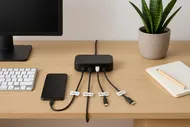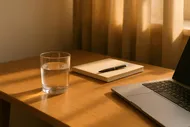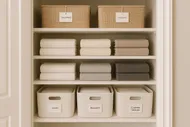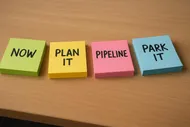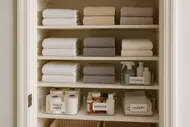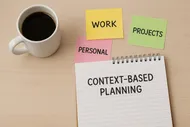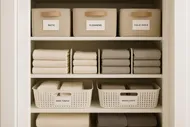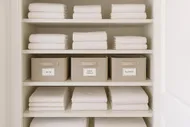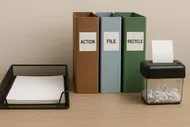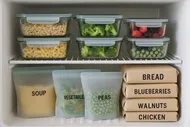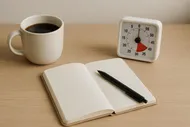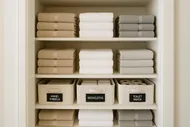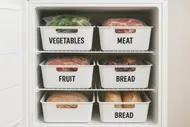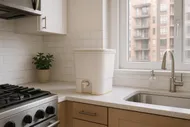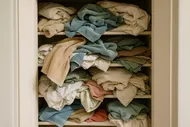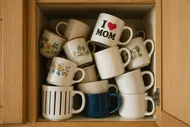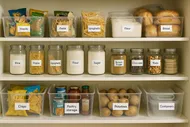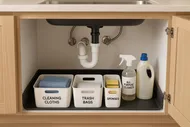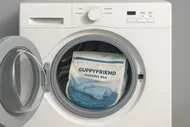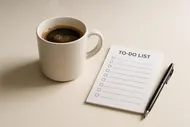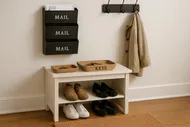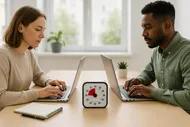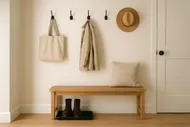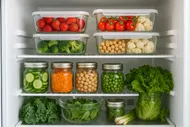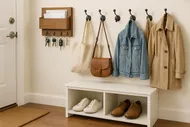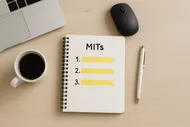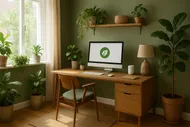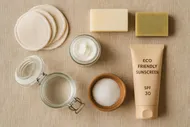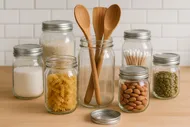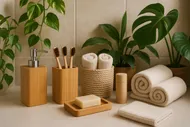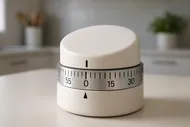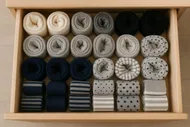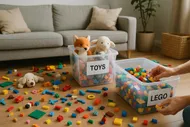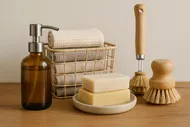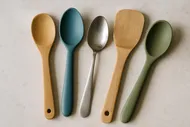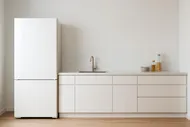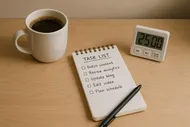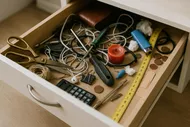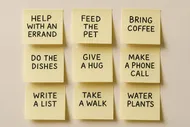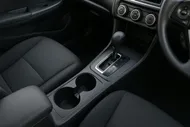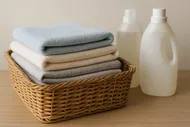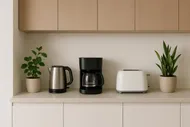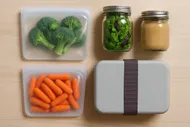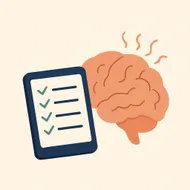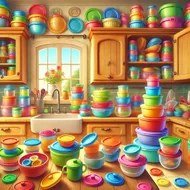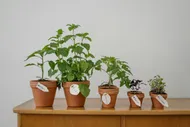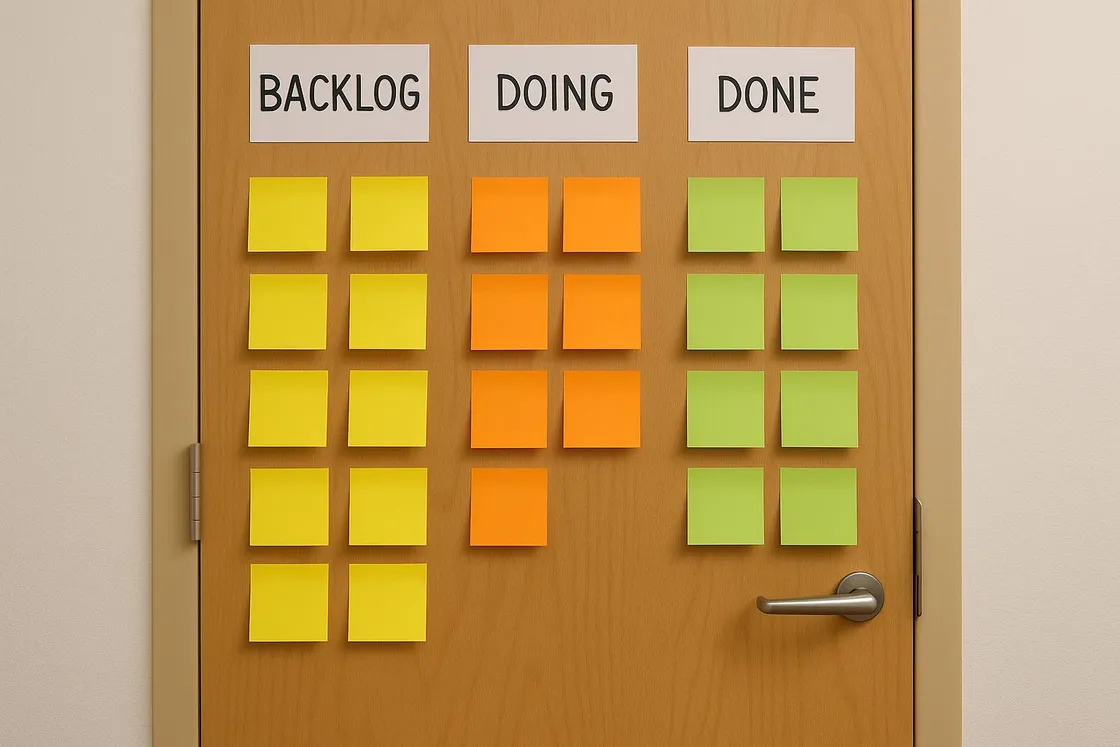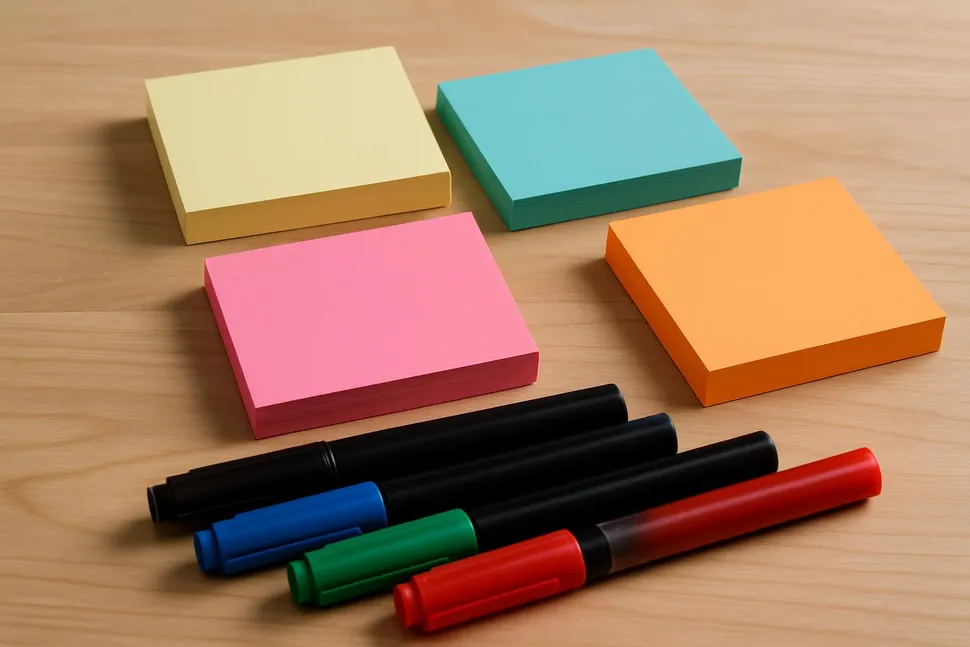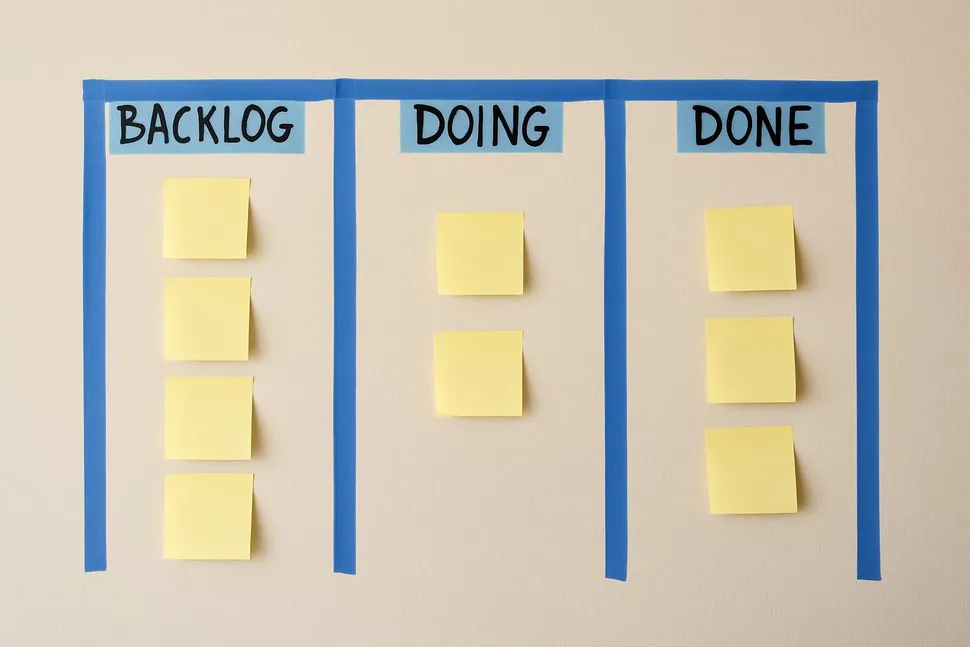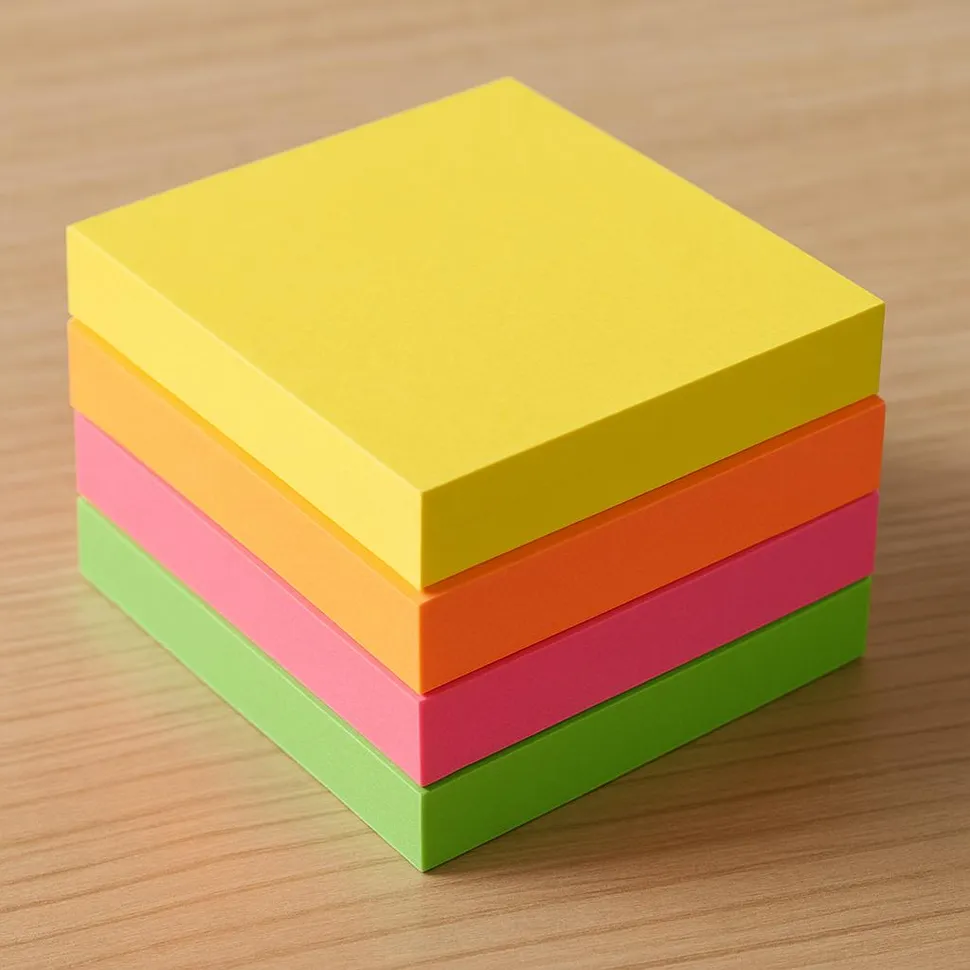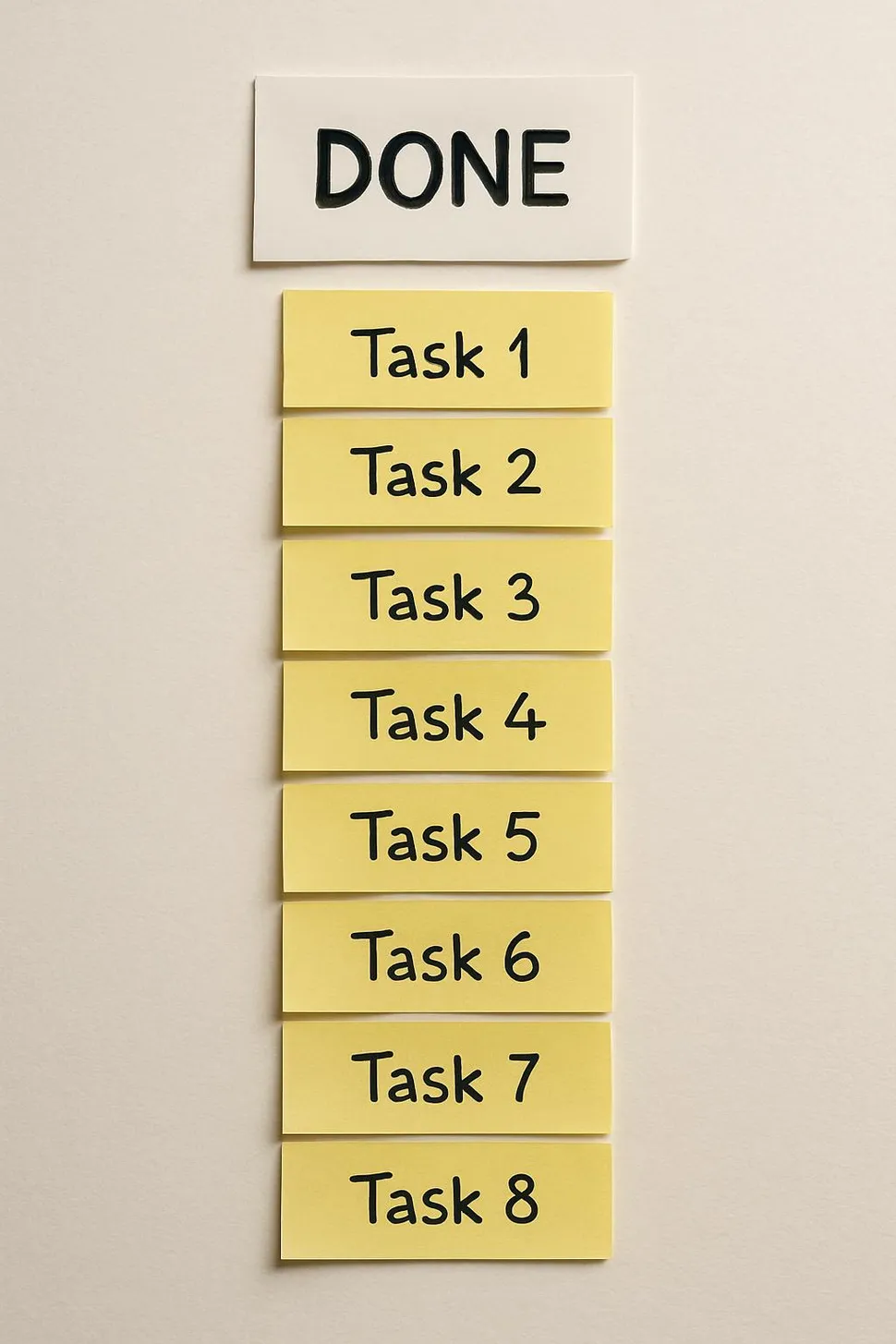Ever wished your to-do list would stop glaring at you from your phone like a disappointed cat? Meet Personal Kanban-on-a-door: a ridiculously simple, suspiciously satisfying setup that turns sticky notes and a flat surface into a productivity arcade game. You move tasks across columns. You get instant visual clarity. And when something lands in Done? Chef’s kiss. Dopamine confetti.
I’ve used this during book drafts, house projects, and the kind of admin sludge that can swallow a Tuesday whole. It’s low-tech, gentle on your brain, and yes—we’re literally putting sticky notes on a door. Not fancy. Very effective.

Why a door? Doors are tall, vertical, and impossible to ignore when you walk by on the way to snacks. They also force you to limit how much you’re doing at once, which is where the magic happens.
🧠TL;DR: Why this works
- Visual beats mental: Your brain loves seeing work, not just remembering it.
- Movement equals momentum: Physically moving a note to Done delivers a tiny hit of motivation.
- Limits > willpower: WIP limits keep your plate from becoming a buffet you regret.
The promise: a system that meets you where your brain is
Personal Kanban rests on two principles:
- Visualize your work
- Limit your work-in-progress (WIP)
When you can see everything at once, your brain stops spending energy remembering and can spend energy doing. Add WIP limits and you stop juggling flaming torches when you’ve only practiced with tennis balls.
Visualize your work. Limit your work-in-progress. (Everything else is a local optimization.)
Personal Kanban, Jim Benson & Tonianne DeMaria Barry
If you like the spirit of focusing on a few things that matter, this pairs beautifully with your daily The Rule of 3: Put Your Daily To-Do List on a Diet and the quick planning rhythm from The 5-Minute Forecast: A Quick Morning Planning Ritual.

Set up your door board in 10 minutes
You’ll create three columns: Backlog → Doing → Done. That’s it. Fancy is optional; momentum is mandatory.
- Pick your door
- Smooth surface? Great. If it’s textured or you’re a renter, use painter’s tape as lanes.
- Make your columns
- Use tape lines and a marker. Label the top of each section: Backlog, Doing, Done.
- Choose your sticky notes
- Standard 3x3s for tasks, mini flags for sub-steps or dependencies.
- Add WIP limits to Doing
- Write a small number at the top: 1–3 for deep work days, 3–5 for mixed admin.
- Color code
- Example: Pink = deep work, Yellow = admin, Blue = errands, Green = people/calls.
- Populate your Backlog
- Brain-dump what you’re willing to do this week. Then stop. Door space is finite by design.
- Move 1–3 notes to Doing
- Respect your WIP limits like the speed limit in a neighborhood with kids and squirrels.
- Celebrate Done
- When a task lands in Done, leave it for the day. Tomorrow, sweep it to archive.
🧻Rental- and finish-friendly setup
Use painter’s tape for lanes and low-tack sticky notes. Test in a corner first. If your door is fussy, stick your notes onto a large sheet of poster board or foam core and then mount that with removable strips.
WIP limits: the antidote to chaos
Think of your Doing column like a tiny airport runway. Only a few planes can land at once without chaos. WIP limits enforce that reality kindly. If Doing is full, you cannot start another task. You must finish, delegate, or delete something first.
- If you chronically start-but-don’t-finish: Set WIP to 2.
- If you’re balancing meetings and maker time: Set WIP to 3–4.
- If your workday is a pinball machine: Set WIP to 3 and add a “Blocked” parking spot.
Use a sticky note labeled “Blocked” for tasks waiting on someone else or a resource. Keep it out of Doing so it does not eat your WIP.
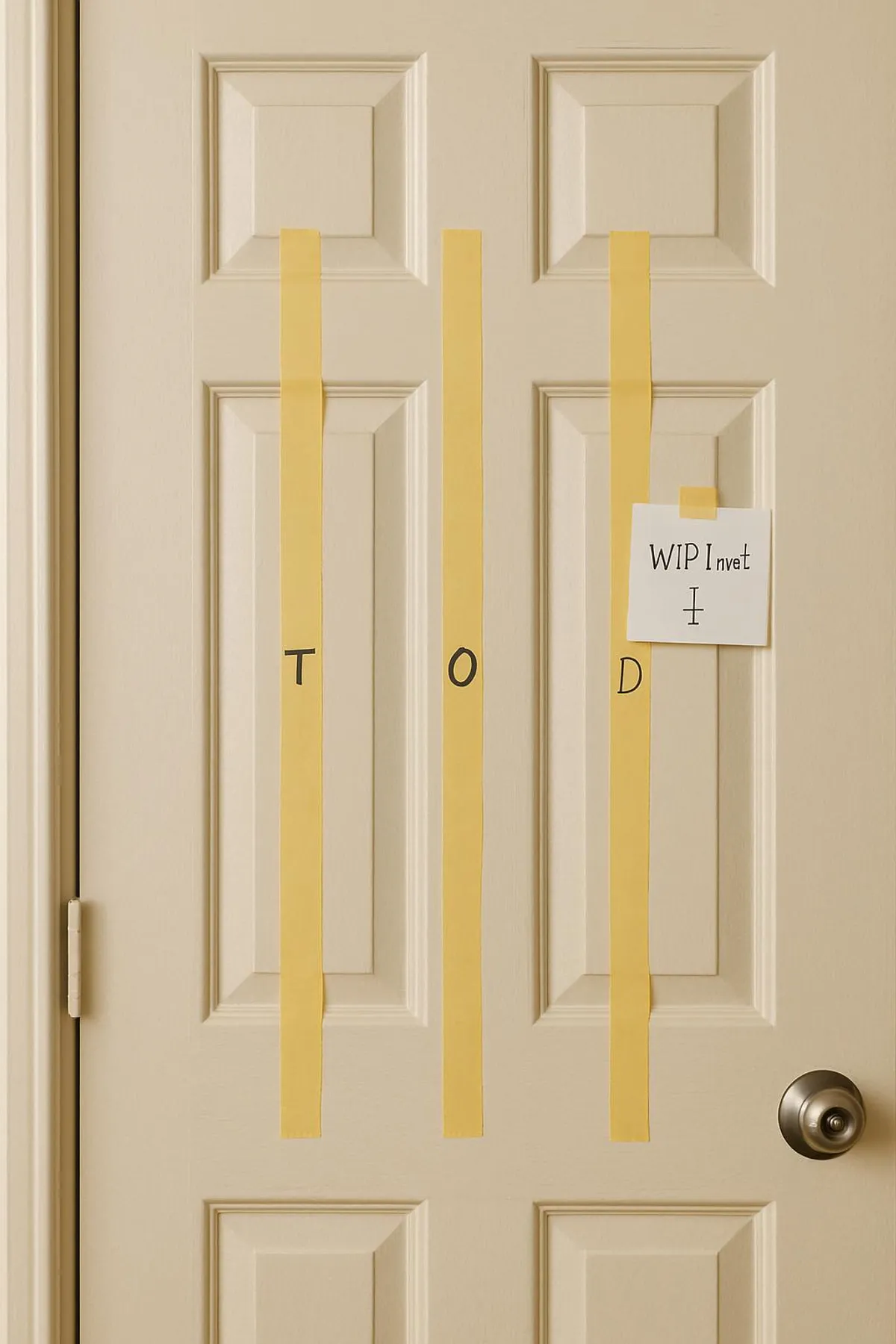
🎯Pro tip: constraint therapy
You don’t need more motivation. You need fewer active tasks. WIP limits shift your brain from “what else can I start” to “what’s the next visible step to finish.”
If focus is shaky, layer in audio that keeps your attention steady. I tested soundtracks in Focus Sound Showdown: Testing Brown Noise, Lo-Fi Beats, and Nature Sounds for Productivity. Pairing your Doing time with a consistent sound cue can be the mental on-ramp you need.
Make color codes do the heavy lifting
Colors should reduce thinking, not add it. A few simple schemes:
- By energy
- Green = low energy
- Yellow = medium
- Red = high
- By context
- Blue = laptop
- Orange = errands/outside
- Purple = calls/people
- By work type
- Pink = creative/deep
- Yellow = admin/ops
- Teal = planning/strategy
Want to plan tasks by where or how you can do them? You’ll love Contextual To-Do Lists: Plan by Energy, Location, and People and The Energy Budget: Plan Your Day by Batteries, Not Hours. Your door board becomes the control tower; contexts are your flight paths.
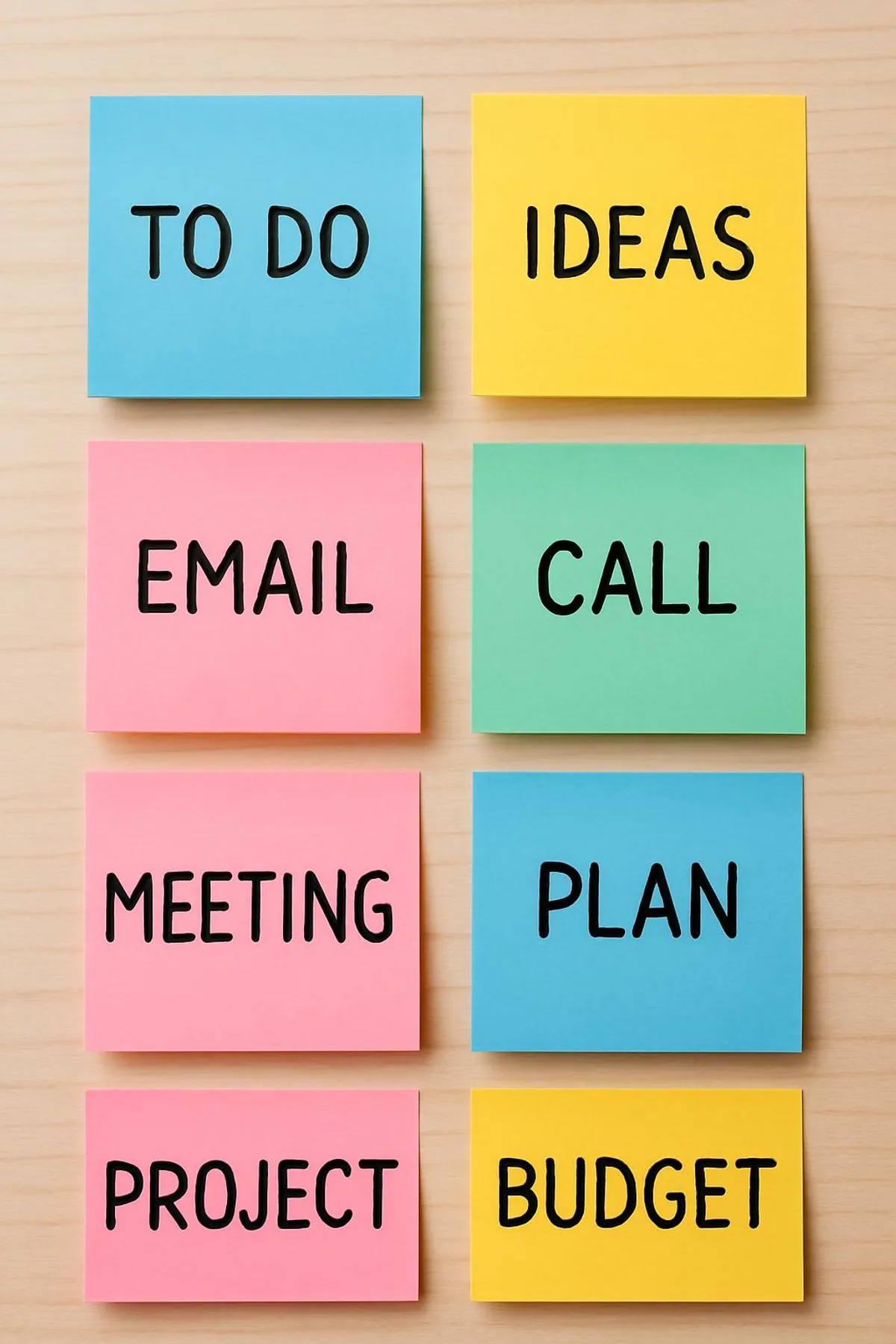
The 10-minute daily sweep that keeps it alive
Without a quick ritual, any board becomes wallpaper. This sweep plays nice with your existing routines like The Shutdown Routine: How 10 Minutes at 5 PM Saves My 9 AM Tomorrow and The 5-Minute Forecast.
- Morning mini-forecast (3 minutes)
- Pick today’s Big 3 (or Big 1 on low-energy days—see The Minimum Viable Day).
- Pull only those notes into Doing. Respect WIP.
- Midday nudge (1 minute)
- Move anything that progressed. Add one micro-next-step to the top note.
- Shutdown sweep (6 minutes)
- Move finished notes to Done.
- Reword vague tasks into visible next steps.
- If Doing is full for tomorrow, put one note back to Backlog intentionally.

🧽Weekly review: the board spa day
On Sunday, clear Done to an archive envelope or snap a photo and toss the notes. Then prune your Backlog brutally—see The Weekly Review That Doesn’t Make You Cry for a friendly script.
Gear that makes it smoother (and oddly delightful)
You can do this with whatever sticky notes you have. If you want to upgrade, these tools hit the sweet spot.
- Sticky notes that actually stick
- Consider “super sticky” varieties for painted wood.
- Painter’s tape (for lanes and labels)
- Leaves finishes alone and looks satisfyingly tidy.
- Fine-tip markers that don’t smudge
- Your future self will thank you for legible micro-steps.
- Page flags for dependencies or blocked notes
🛒Affiliate note
Some links above may be affiliate links, which help support MySimple.life at no extra cost to you. Thanks for keeping the sticky-notes flowing.
If you want a complementary digital home for reference notes and project details, layer this with Second Brain, Zero Jargon: A Simple Notes System You’ll Actually Use. Door board = action control center; notes app = memory palace.

Common pitfalls (and how to fix them)
- The board becomes wallpaper
- Fix: Add the 10-minute daily sweep to your calendar and tie it to a trigger—last sip of coffee or your Shutdown Routine.
- Doing column overflow
- Fix: Set WIP to a painfully small number (2) for a week. It’ll hurt less than you think.
- Tasks are vague or chunky
- Fix: Rewrite tasks as visible next steps: “Open deck and write slide 1 headline,” not “Work on presentation.”
- Too many columns
- Fix: Stick to three. Add a small “Blocked” parking if needed. Resist the urge to create a Kanban amusement park.
- Housemates steal the board
- Fix: Great! Make a shared one in the kitchen for chores and shopping. Use separate colors per person.
- Motivation is toast
If you suspect accountability would help, try working alongside a friend for 25-minute bursts from Body Doubling 101. Move notes together; celebrate Done together.

Remote-friendly and hybrid tweaks
- Photo archive: At day’s end, snap a pic of your board. Toss the notes weekly knowing you’ve captured progress.
- Travel mini-board: Keep a small pack of sticky notes and a folded sheet of card stock in your bag. Instant pop-up Kanban at a coffee shop.
- Status sharing: If your team needs updates, a single daily photo (or a typed list of Doing and Blocked) beats a thousand pings. Combine with Notification Tiers: A Sanity-Saving System to Tame Pings so you can actually get work done.

Optional: add a micro scoreboard
If you do longer projects, track throughput (how many notes hit Done each day). Draw five tiny boxes on a sticky labeled “This Week” and tick one for each task completed. It’s silly. It works.
Pair that with a gentle weekly ritual from The 30-Minute Sunday Reset or The Weekly Review That Doesn’t Make You Cry, and Monday-you becomes an unstoppable sticky-note sherpa.
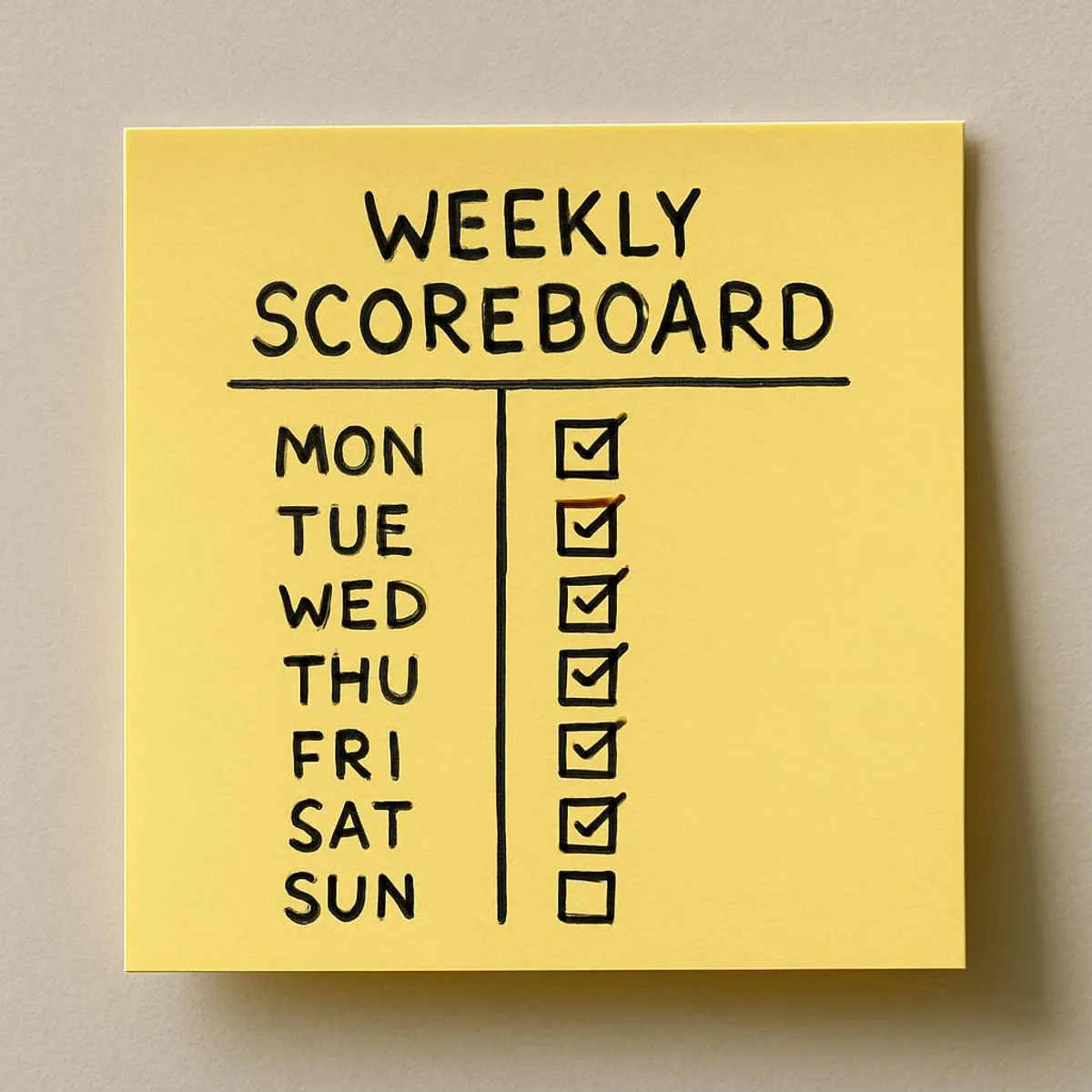
Your starter template (copy/paste to the door in your brain)
- Columns
- WIP limit for Doing
- Deep work day: 2
- Mixed tasks day: 3–4
- Color code (pick one scheme)
- Energy: green/medium/yellow/high/red
- Context: laptop/errands/calls
- Type: deep/admin/people
- Daily sweep (10 minutes total)
- AM: pull Big 3 into Doing
- Midday: move progress, add next visible step
- PM: sweep Done, prune Backlog, reset WIP for tomorrow
- Weekly reset (30 minutes)
- Clear Done, archive or photo
- Rename chunky tasks
- Re-commit only what earns a place on the door
Try the 7-day Door Kanban challenge
- Day 1: Set up your door and pick a color scheme.
- Day 2: Set WIP to 2. Yes, two. Finish both.
- Day 3: Add a “Blocked” parking spot if needed.
- Day 4: Rewrite any vague notes as visible next steps.
- Day 5: Pair a Doing block with your favorite focus track from our Focus Sound Showdown.
- Day 6: Do the weekly sweep. Archive your Done pile with a proud grin.
- Day 7: Adjust WIP and colors. Keep what worked. Nuke what didn’t.
If you want bonus structure, combine this with The Shutdown Routine and a Monday 5-Minute Forecast. Your brain will hum like a well-oiled sticky-note machine.
🚪Show me your door board!
I want to see your setup. Share a photo and tag our Instagram: @mysimple.life.official. Bonus points for creative color schemes and WIP tattoo jokes.

One last nudge: don’t wait for the perfect markers or the ideal door or the lunar phase of maximum productivity. Grab a pad, draw three lanes, and move the first sticky. You’ll be surprised how quickly your day starts to move with it.




